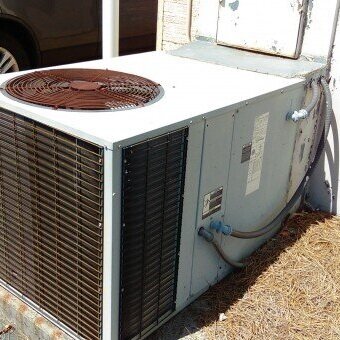What Happens If Indoor Humidity Is Too Low?
Humidity represents the amount of water vapor present in the air. While most discussions around humidity focus on excessive moisture and its effects, low indoor humidity is just as important to understand—especially during colder or dry climates. The ideal indoor relative humidity ranges from 40% to 60%, providing optimal comfort and supporting health and home integrity.
But what is low humidity, exactly? Generally, when the relative humidity level dips below 30%, the air inside your home becomes too dry. This can lead to various issues, from respiratory irritation and dry skin to potential property damage. If humidity is low in your house, take steps to restore balance. Below, we'll explore the effects of low humidity and provide practical solutions for maintaining healthier indoor air.
Low Humidity in House Environments
It's easy to miss the signs of low indoor humidity. Unlike visible mold caused by high humidity, dry air doesn't leave as many visual clues. However, homes with frequent use of furnaces or forced air heating systems often experience significant drops in moisture. Even if the temperature feels comfortable, the air quality can be compromised.
When people ask what happens if there is no humidity or extremely low humidity, the answer involves a combination of health-related symptoms and environmental wear and tear. Recognizing the signs and knowing how to correct them can help maintain your well-being and your property.
Low Humidity Levels Affect Respiratory Health
One of the more serious health effects of low humidity is its impact on the respiratory system. Dry air can irritate the nasal passages, making breathing more difficult, especially for those with allergies or sinus conditions. If you're already prone to respiratory problems, dry air might intensify symptoms such as coughing, sneezing, or throat discomfort.
There's also a surprising correlation between low humidity and virus longevity. Some viruses thrive in dry air, allowing them to remain airborne longer and increasing your risk of exposure. As indoor humidity decreases, infectious aerosols can travel farther from coughs and sneezes. Managing low indoor humidity becomes essential during cold and flu season.
Low Humidity Can Irritate the Eyes
Have you noticed increased blinking or felt your eyes are more tired than usual? These could be symptoms of low humidity. When air lacks moisture, it can cause tears to evaporate too quickly, leading to dry, itchy, or irritated eyes. Over time, this disruption in your eyes' natural tear film may reduce visual clarity and increase discomfort.
If you frequently reach for artificial tears or rub your eyes more often at home than elsewhere, the issue might not be your screen time—it might be your home's humidity level.
Low Humidity Can Dry and Damage the Skin
Dry, cracked, or itchy skin during the winter is often blamed on cold temperatures, but indoor air quality plays a significant role. One of the most noticeable effects of low humidity is on your skin. Dry air strips away the skin's natural moisture barrier, making it harder to retain hydration. For people with eczema or psoriasis, low humidity can worsen symptoms and potentially lead to skin infections.
Your skin's elasticity may also decrease, making it feel tight and more prone to irritation or micro-tears. If moisturizing constantly doesn't improve your skin, consider the possibility that your indoor air is too dry.
Dehydration
Is low humidity bad for you? Absolutely—especially when it causes dehydration.
It's easy to assume dehydration only occurs when you're not drinking enough water. However, if your indoor humidity is low, you can lose moisture simply by breathing. The drier the air, the more water your body expels to maintain internal balance.
Can low humidity cause dehydration? Yes, and it does so subtly. People often wake up feeling dry-mouthed or fatigued without realizing it's due to the air rather than hydration habits. Over time, this can affect your overall energy levels and health, especially if other symptoms like dry skin, lips, or eyes are also present.
Low Humidity Can Even Damage Your Home
While human health is the primary concern, it's also essential to ask: what happens if there is no humidity from a property standpoint? The answer involves various forms of structural and cosmetic damage.
Wood is susceptible to dry environments. Hardwood floors may crack, gap, or warp if the air consistently lacks moisture. Furniture made from natural materials can also shrink or split. Musical instruments, cabinetry, and artwork can suffer under prolonged dry conditions.
Paint can peel more easily in dry air, and wallpaper might begin to loosen at the seams. Even static electricity increases when humidity is low, making it annoying to touch light switches, doorknobs, or electronics.
Low Humidity Symptoms Everyone Should Recognize
Recognizing the signs early can help you take corrective action. Here are some of the most common low humidity symptoms in both people and property:
Dry or scratchy throat
Itchy or flaky skin
Chapped lips
Sinus irritation or nosebleeds
Coughing or wheezing
Fatigue or feeling unwell indoors
Warped wood or gaps in flooring
Increased static shocks
Multiple symptoms appear simultaneously, indicating that your home's air quality needs improvement.
What is Low Humidity Doing to Your Comfort?
Beyond health and structural impacts, low humidity reduces overall comfort. Rooms may feel colder than they are because dry air makes it harder for your body to retain warmth. You might raise the thermostat unnecessarily, increasing energy costs and putting additional strain on your HVAC system.
This becomes even more pronounced in homes with a forced-air heating system. As these systems heat and circulate air, they can inadvertently reduce humidity levels further. Comfort and efficiency decline together without a strategy to introduce moisture back into the air.
How to Manage Indoor Humidity Levels Effectively
If you suspect low humidity in your house, the first step is to measure it. Invest in a digital hygrometer—these affordable devices track relative humidity and give you a clear snapshot of your indoor environment. Once you confirm the problem, several solutions are available.
Use a humidifier—One of the most effective ways to combat low humidity is to use a humidifier. These devices release moisture into the air and are available in various sizes, from single-room models to whole-house systems. A professional HVAC contractor can install a bypass or steam humidifier directly into the ductwork in homes with a forced air heating system.
Try steam-enhancing techniques. Boiling water on the stove, taking longer showers, or using a vaporizer can all temporarily increase indoor humidity. However, they are not long-term solutions.
Add houseplants – Certain indoor plants naturally release moisture through transpiration. Peace lilies, ferns, and rubber plants are all excellent choices.
Seal your home—Seal drafts around windows and doors to Prevent dry outdoor air from entering. Weatherstripping and insulation upgrades can also help maintain consistent humidity levels.
Maintain your HVAC system – Heating systems that rely on forced air can benefit from annual inspections to ensure optimal airflow and humidity control. Your technician may also recommend replacing filters more frequently or adding humidification accessories.
Final Thoughts
Living in a home with low humidity might not seem like a big deal at first, but the effects become clear over time. From dry skin and sinus discomfort to dehydration and property damage, the consequences of neglecting humidity levels add up quickly.
Whether you're dealing with itchy eyes, static shocks, or warping wood floors, the signs tell you that your air needs moisture. Maintaining healthy humidity levels is more than comfort—health, protection, and quality of life. Fortunately, by identifying the problem and investing in simple tools or professional HVAC solutions, you can restore balance and breathe easier all year.
CMB Air specializes in offering services like indoor air quality, duct fogging, duct repair and maintenance, thermostat, and iWave air purifier. No hidden charges and fees. Call (813) 447-1443 today for consultation.

